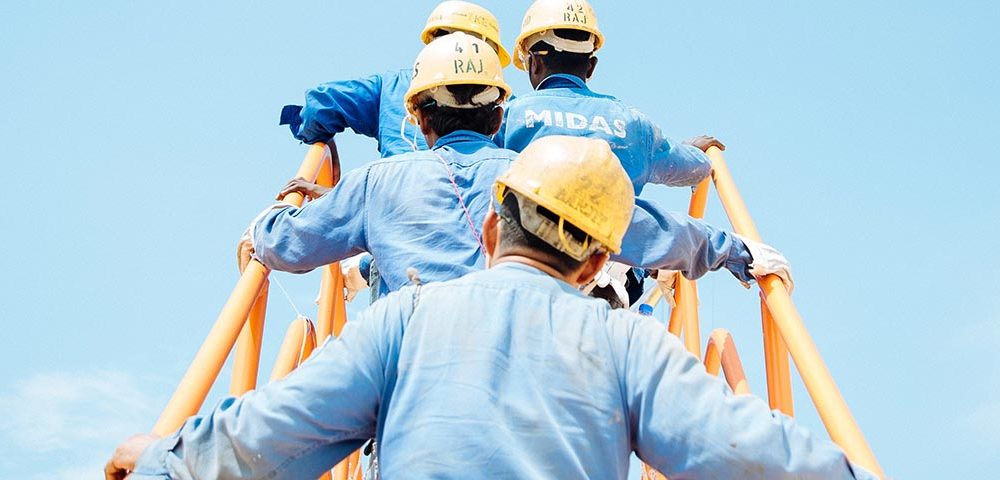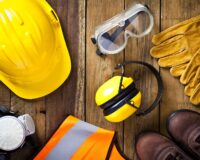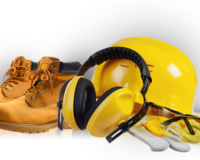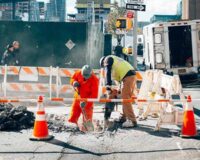Construction sites can be dangerous places, with a wide range of hazards that can cause serious injury or even death. It is essential for all workers on construction sites to take safety seriously and to take steps to protect themselves and their colleagues.
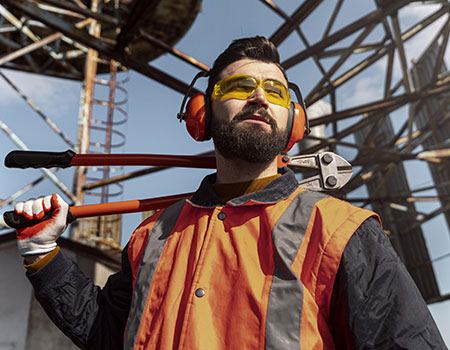
1. Wear Appropriate PPE
Personal protective equipment (PPE) is essential for staying safe on construction sites. Workers should wear PPE that is appropriate for the job and the specific hazards present on the site. Common types of PPE include hard hats, safety glasses, steel-toed boots, gloves, and hearing protection.
2. Use Safe Lifting Techniques
Many construction jobs involve lifting heavy objects, which can cause back injuries and other musculoskeletal disorders. Workers should use safe lifting techniques, such as bending at the knees and keeping the back straight, to avoid injury. If an object is too heavy to lift safely, workers should use lifting equipment or ask for assistance.
3. Follow Electrical Safety Guidelines
Construction sites often involve working with electricity, which can be extremely dangerous if not handled properly. Workers should follow electrical safety guidelines, such as using grounded equipment and avoiding water and other conductive materials when working with electrical equipment.
4. Use Proper Tool Safety Techniques
Tools can be hazardous if not used properly. Workers should always use tools as instructed and follow all safety guidelines. Tools should be inspected regularly for damage and replaced if necessary.
5. Use Fall Protection Equipment
Falls are a leading cause of injuries on construction sites. Workers should use fall protection equipment, such as harnesses and guardrails, when working at heights. Workers should also ensure that scaffolding and ladders are set up and used properly.
6. Be Aware of Your Surroundings
Construction sites can be busy and chaotic, with many workers and vehicles moving around. Workers should be aware of their surroundings at all times and avoid potential hazards. Workers should also communicate effectively with each other to ensure that everyone is aware of potential hazards.
7. Take Breaks and Stay Hydrated
Construction work can be physically demanding and can cause fatigue and dehydration. Workers should take regular breaks and drink plenty of water to stay hydrated. Workers should also be aware of the signs of heat exhaustion and take steps to avoid it.
8. Report Safety Concerns
If a worker notices a safety concern on the construction site, they should report it immediately to their supervisor or safety officer. It is essential to address safety concerns promptly to prevent accidents and injuries.
9. Stay Educated on Safety Procedures
Safety procedures on construction sites can change over time, and workers should stay up to date on the latest guidelines and regulations. Workers should also participate in safety training programs and refreshers regularly.
10. Conclusion
Construction sites can be dangerous places, but by following safety guidelines and using appropriate PPE and equipment, workers can stay safe and avoid accidents and injuries. Workers should also communicate effectively with each other and report safety concerns promptly to ensure a safe working environment.
11. FAQs
- What is PPE, and why is it essential for construction workers?
PPE stands for Personal Protective Equipment and refers to any equipment or clothing worn to protect workers from hazards on the job. PPE is essential for construction workers because construction sites can be dangerous places with many potential hazards, including falling objects, electrical shocks, and exposure to hazardous materials. PPE can help protect workers from these hazards and reduce the risk of accidents and injuries.
- What are some common types of PPE used on construction sites?
Common types of PPE used on construction sites include hard hats, safety glasses, steel-toed boots, gloves, hearing protection, and respiratory protection. PPE should be appropriate for the job and the specific hazards present on the site. Workers should also ensure that their PPE is properly maintained and replaced if damaged.
- How can workers prevent back injuries when lifting heavy objects?
Workers can prevent back injuries when lifting heavy objects by using proper lifting techniques, such as bending at the knees and keeping the back straight. Workers should also use lifting equipment, such as hoists or cranes, when necessary. Taking breaks to rest and stretch can also help prevent injuries.
- What are some common electrical safety guidelines on construction sites?
Common electrical safety guidelines on construction sites include wearing appropriate PPE, such as rubber gloves and boots, when working near electrical equipment, using ground fault circuit interrupters (GFCIs) to protect against electrical shocks, and ensuring that electrical equipment is properly grounded and maintained. Workers should also avoid working in wet conditions or using damaged electrical equipment.
- How can workers protect themselves from falls on construction sites?
Workers can protect themselves from falls on construction sites by using appropriate fall protection equipment, such as safety harnesses, lanyards, and lifelines. Workers should also ensure that scaffolds and ladders are properly erected and maintained and that they use them correctly. Workers should avoid working at heights without fall protection equipment.
- Why is it essential to be aware of your surroundings on a construction site?
Being aware of your surroundings on a construction site is essential to prevent accidents and injuries. Construction sites can be busy and crowded places, with many potential hazards. Workers should be aware of their surroundings and watch out for potential hazards, such as moving vehicles or equipment, overhead hazards, or trip hazards.
- How can workers prevent heat exhaustion on a construction site?
Workers can prevent heat exhaustion on a construction site by staying hydrated and taking breaks in a shaded or cool area when necessary. Workers should also wear appropriate clothing, such as lightweight and breathable materials, and use fans or other cooling devices when available. Employers should also provide training and guidelines on working in hot environments.
- What should workers do if they notice a safety concern on a construction site?
Workers should report any safety concerns they notice on a construction site promptly. They should notify their supervisor or safety officer and fill out any necessary reports. Reporting safety concerns can help prevent accidents and injuries on the job and create a culture of safety on the site.
- Why is it important for workers to stay educated on safety procedures?
It is essential for workers to stay educated on safety procedures because construction site hazards and regulations can change over time. By staying up to date on the latest guidelines and regulations, workers can ensure that they are taking the necessary steps to stay safe on the job. Participating in safety training programs and refreshers also helps workers reinforce their knowledge and skills.
- What are some tips for communicating effectively on a construction site?
Communication is key to staying safe on a construction site. Workers should be clear and concise when communicating with each other and should avoid using jargon or technical terms that may be confusing. Workers should also listen actively to their colleagues and ask questions if they do not understand something. Using hand signals and visual aids can also be helpful when communicating in noisy or crowded environments.
- How can workers prevent musculoskeletal disorders on a construction site?
Musculoskeletal disorders, such as back injuries and strains, are common on construction sites. Workers can prevent these injuries by using proper lifting techniques, using lifting equipment when necessary, and taking breaks to rest and stretch. Workers should also avoid repetitive motions and awkward postures that can put stress on the body.
- What are some common hazards on construction sites?
Construction sites can be hazardous places, with many potential hazards. Common hazards include falls, electrical shocks, struck-by and caught-in or caught-between accidents, and exposure to hazardous materials. Workers should be aware of these hazards and take steps to protect themselves and their colleagues.
- Why is it essential to report safety concerns promptly?
Reporting safety concerns promptly is essential to prevent accidents and injuries on construction sites. By reporting concerns, workers can ensure that hazards are addressed promptly and that appropriate measures are taken to protect workers. Reporting concerns also helps to create a culture of safety on the job and encourages workers to take safety seriously.
- What should workers do if they are injured on the job?
If a worker is injured on the job, they should seek medical attention immediately. Workers should also report the injury to their supervisor or safety officer and fill out any necessary injury reports. Workers may be entitled to workers’ compensation benefits, which can help cover medical expenses and lost wages.
- What are some common types of PPE used on construction sites?
Common types of PPE used on construction sites include hard hats, safety glasses, steel-toed boots, gloves, hearing protection, and respiratory protection. PPE should be appropriate for the job and the specific hazards present on the site. Workers should also ensure that their PPE is properly maintained and replaced if damaged.
In conclusion, staying safe on a construction site is a top priority for workers and employers alike. By following safety guidelines and using appropriate PPE and equipment, workers can protect themselves and their colleagues from accidents and injuries. Effective communication and reporting of safety concerns are also essential to maintaining a safe working environment.

